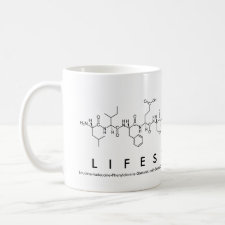
Authors: Shi XX, Xu L, Duan HQ, Huang YP, Liu ZS
Article Title: CEC separation of ofloxacin enantiomers using imprinted microparticles prepared in molecular crowding conditions.
Publication date: 2011
Journal: Electrophoresis
Volume: 32
Issue: (11)
Page numbers: 1348-1356.
DOI: 10.1002/elps.201000515
Alternative URL: http://onlinelibrary.wiley.com/doi/10.1002/elps.201000515/abstract
Abstract: Abstract: Molecular crowding is a new concept to obtain molecularly imprinted polymers (MIPs) with greater capacity and selectivity, which could shift the equilibrium of a print molecule reacting with functional monomers in the direction of complex formation side. In this work, molecular crowding agent was first applied to the preparation of MIPs microparticles by precipitation polymerization. A new system of molecular crowding surrounding was developed, composed of polystyrene and tetrahydrofuran, in the presence of the template (S)-ofloxacin. Partial filling capillary electrochromatography (CEC) was utilized to evaluate imprinting effect of the resulting microparticles by chiral separations of ofloxacin. Some important parameters in the preparation, i.e. template to monomer ratio, influence of cross-linking monomers and functional monomer composition on the CEC separation of MIP microparticles were investigated. Baseline separation of ofloxacin (Rs=1.53) was obtained under optimized conditions and the highest theory plate of the later eluent (S)-ofloxacin was 5400. The textural and morphological parameters for imprinted particles, such as Brunauer-Emmett-Teller surface areas, pore volumes and pore size distributions have also been determined. Compared to the MIP microparticle prepared by conventional precipitation polymerization, the (S)-ofloxacin-imprinted particles formed under molecular crowding conditions showed higher selectivity (α=1.09) and separation efficiency (<25 min) in the CEC mode
Template and target information: (S)-ofloxacin
Author keywords: CEC, Crowding agent, Microparticle, molecularly imprinted polymer, Ofloxacin



Join the Society for Molecular Imprinting

New items RSS feed
Sign-up for e-mail updates:
Choose between receiving an occasional newsletter or more frequent e-mail alerts.
Click here to go to the sign-up page.
Is your name elemental or peptidic? Enter your name and find out by clicking either of the buttons below!
Other products you may like:
 MIPdatabase
MIPdatabase









